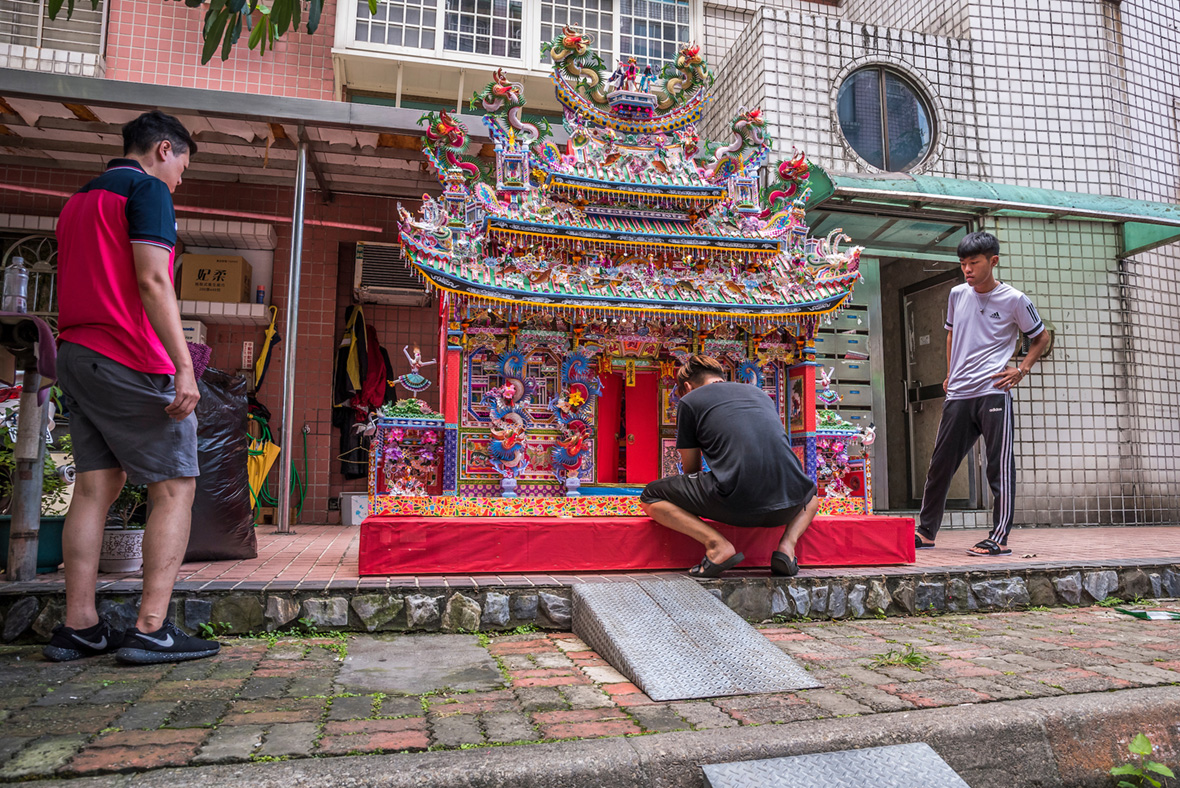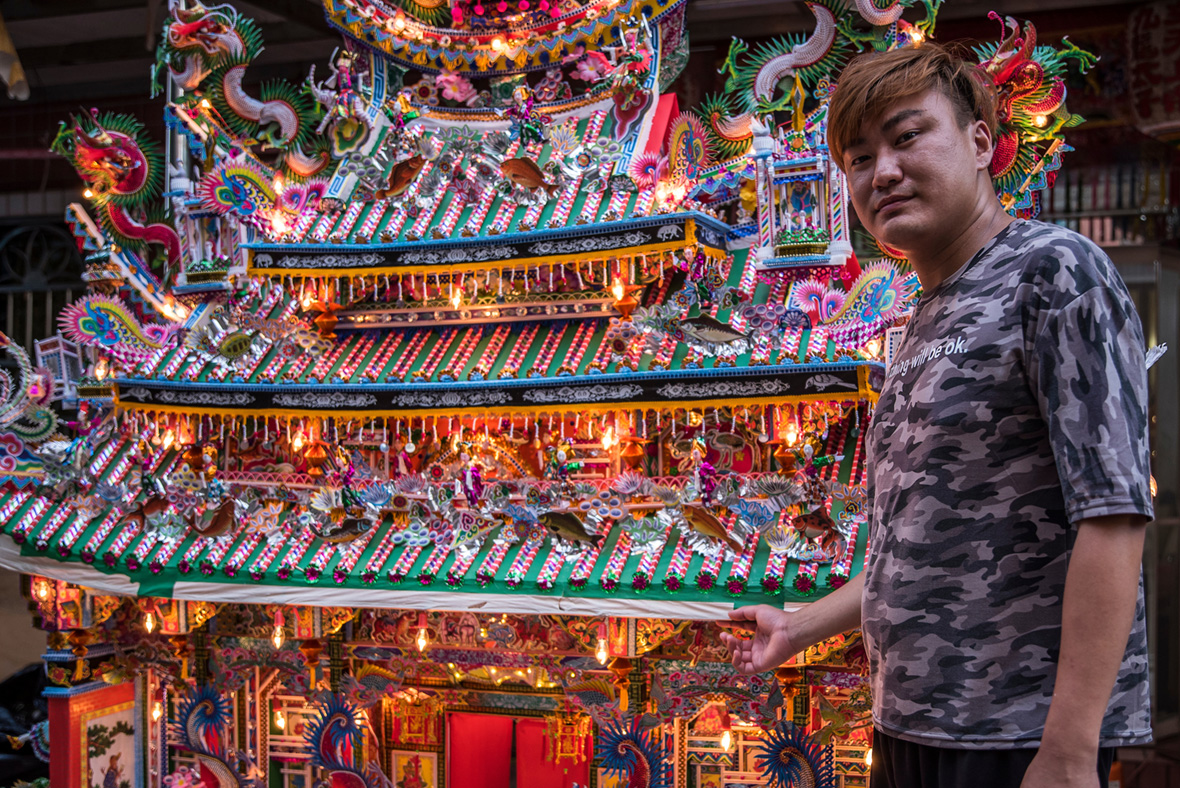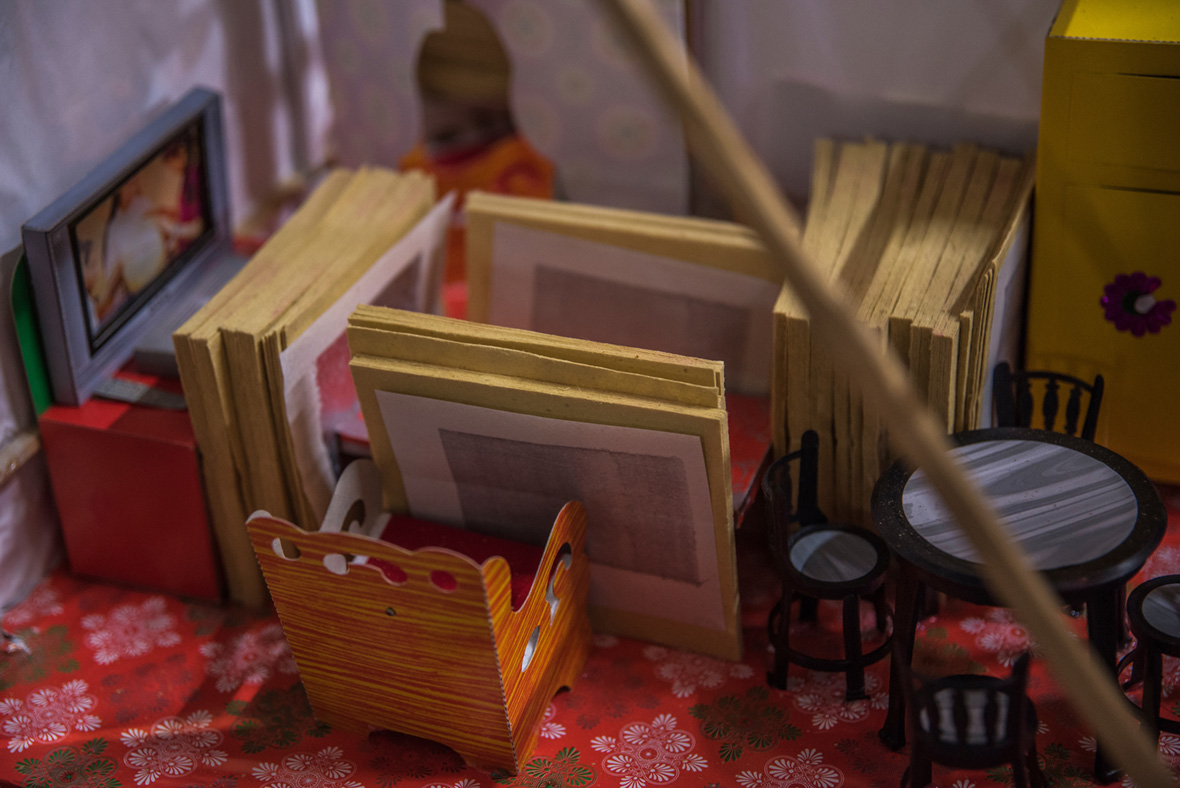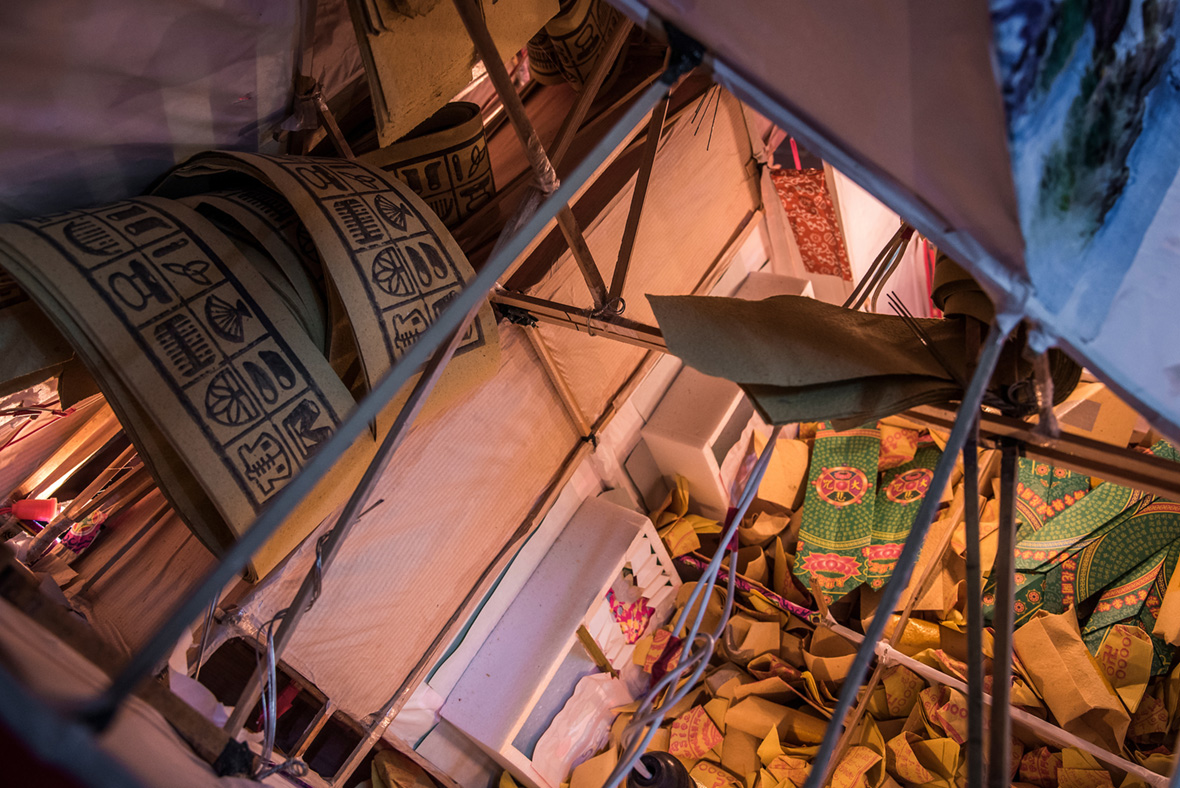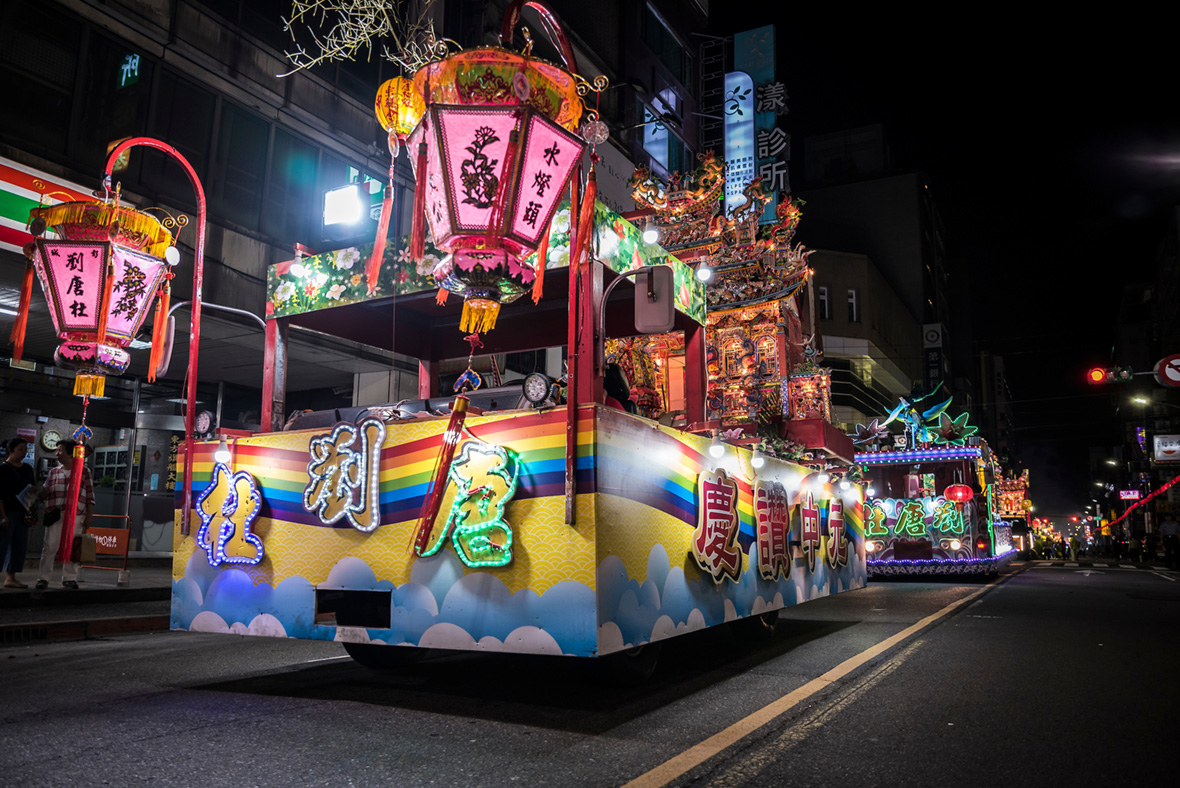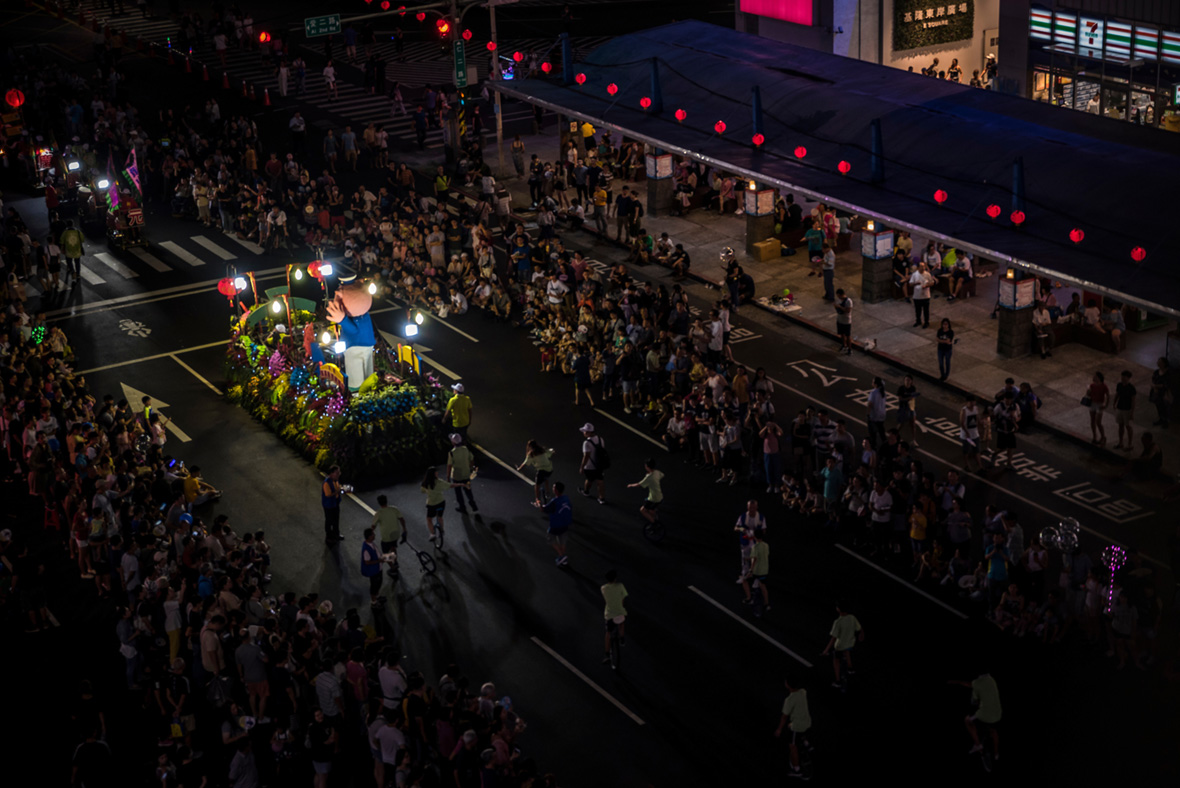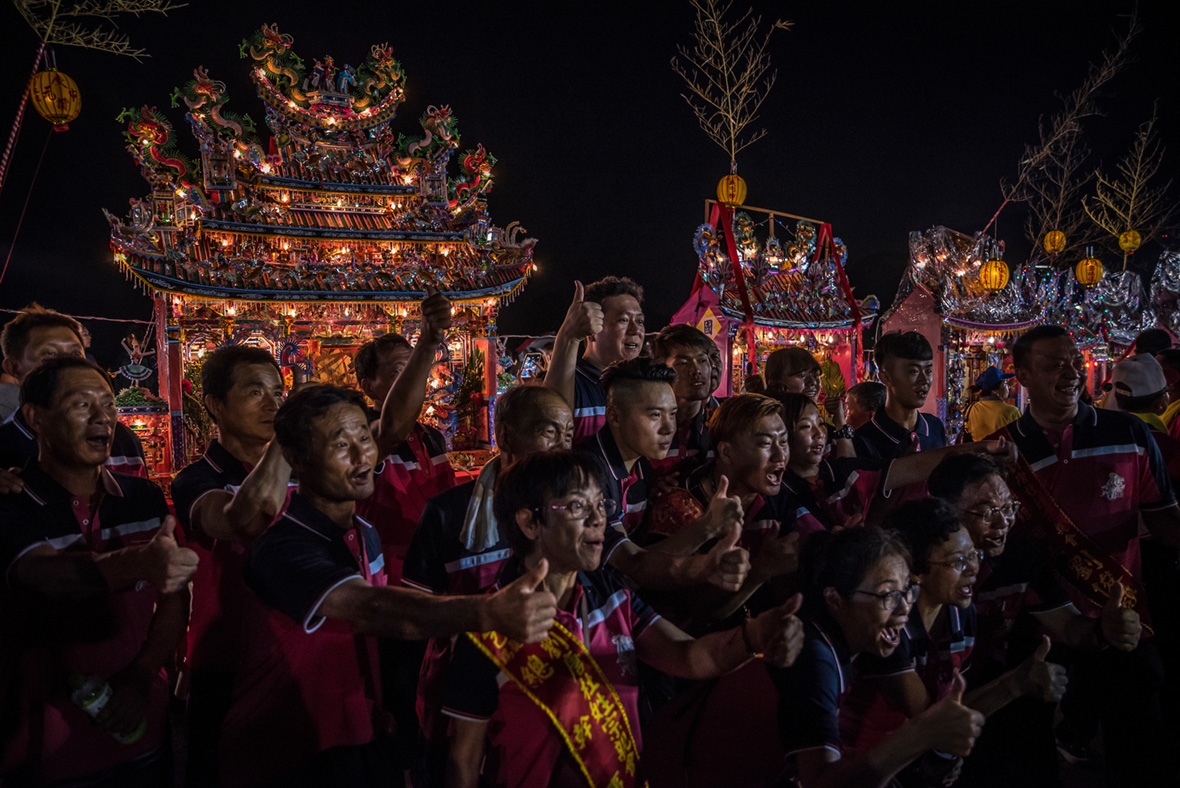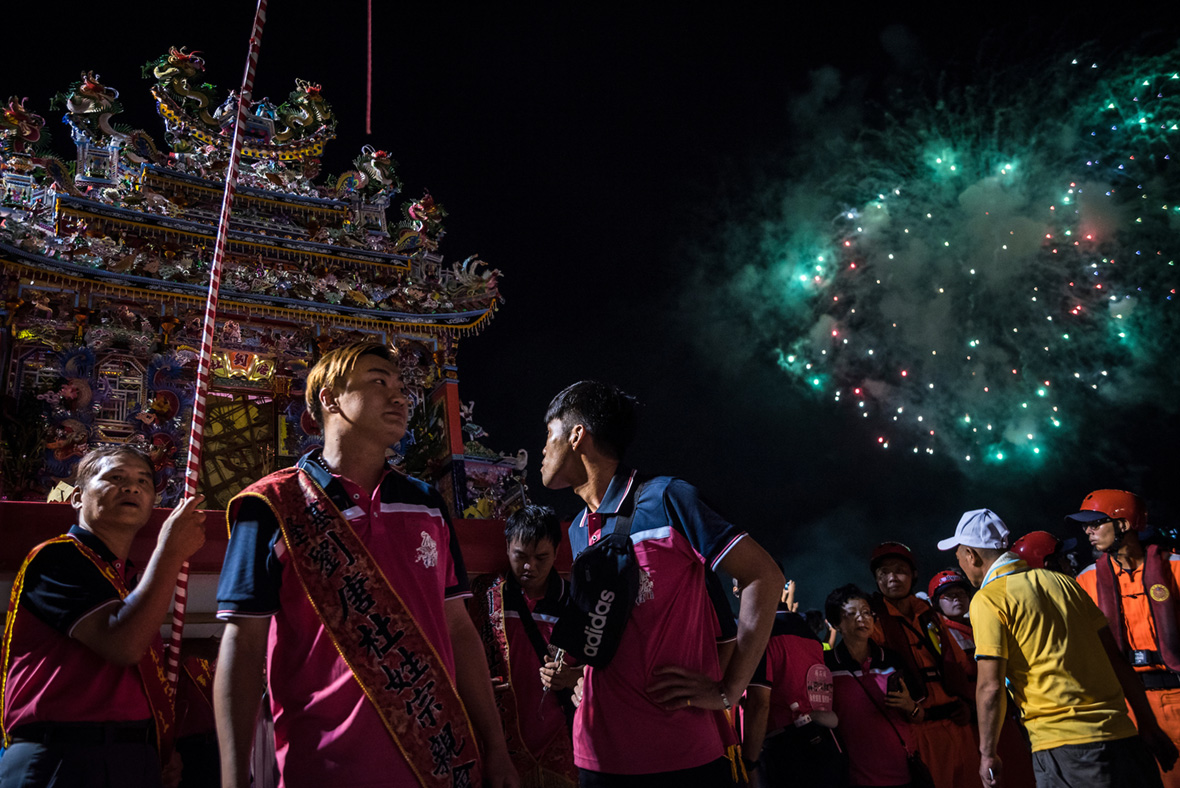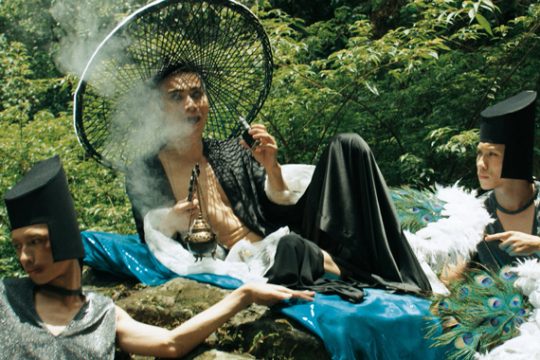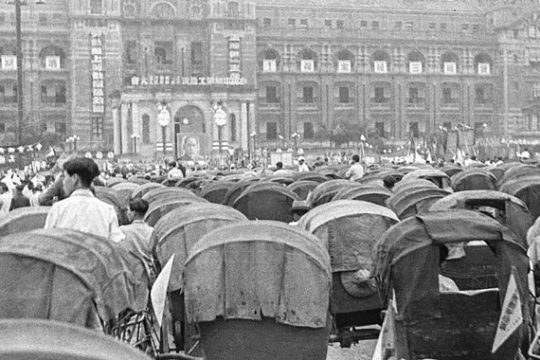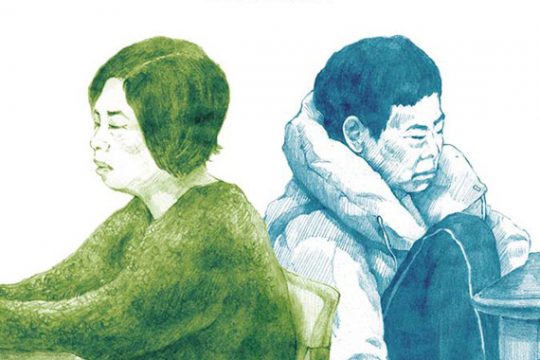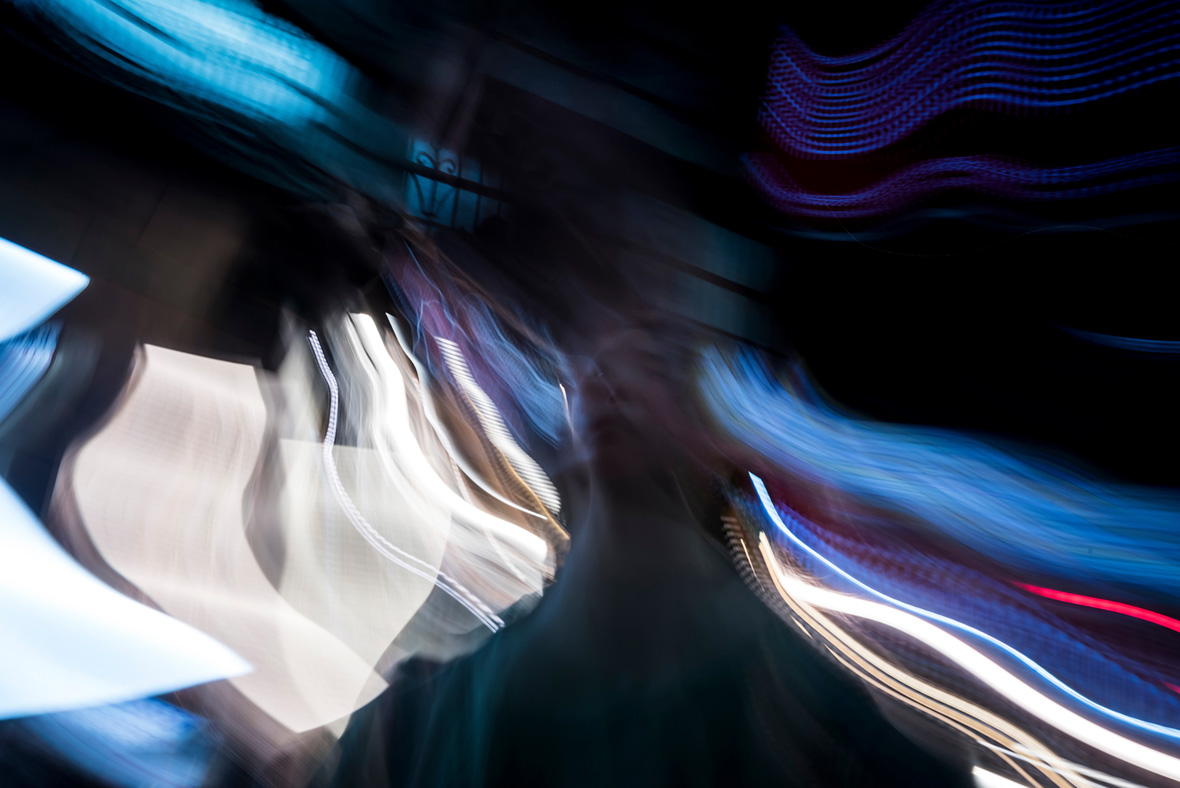
When the Gates of Hell open in the seventh month of the Lunar year, spirits roam the earth. To keep them at ease, Taiwanese people burn joss money and zhizha, which are paper offerings that come in the form of mansions, cars, and even mobile phones. These afterlife amenities, meant for deceased ancestors, are given in exchange for their blessings.
29-year-old Du Zhenhao is regarded as one of the country’s youngest zhizha artists. Every year, he crafts a large-scale zhizha mansion that resembles a temple because of its exterior. Several months of hard work lead to one night, when Du takes his mansion to the small fishing port of Badouzi, sets it on fire, and releases it into the sea.
农历七月鬼门开,孤魂野鬼四处飘。在台湾,人们为了普渡幽魂,会焚烧冥币和纸扎。这些纸扎通常都是一些纸制的大厦、汽车,甚至还有纸手机。人们将这些祭品烧给逝去的祖先,以换取他们的庇护。
29 岁的杜振豪被誉为台湾最年轻的纸扎艺术家之一。每年,他都会耗时数月,制作一个大型的纸扎大厦,外观看上去颇像一座寺庙。到了七月半中元节当晚,他就会带着这个纸扎大厦前往八斗子渔港,将其点燃后投入大海。
Du’s zhizha art is among many others in the Keelung Ghost Festival, an ancestral ceremony that honors the dead, in particular those who lost their lives in a deadly clash between different ethnicities in the city in 1851. Each paper assemblage is decorated with a single Chinese character related to a clan name that was shared by both sides of the clash.
Growing up in a small fishing village, Du spent much of his childhood surrounded by Taoist temples and traditions. Memories from his formative years are a large part of what inspired him to become a professional zhizha artist. He is self-thought in the architecture of temples and mansions, which is reflected in his craft. He strives for perfection because of his personality, but also his strong desire to show respect for his ancestors.
为参加基隆鬼节制作的纸扎作品有很多,杜振豪的作品是其中之一。中元节又称鬼节,其历史源远流长,旨在祭祀先祖,在基隆当地来说,尤其是要祭拜那些在 1851 年在当地罕见的宗族大械斗中丧生的游魂。每个纸扎上都画着一个宗姓名字,这是当年械斗留下来的习俗,即以姓氏区分两族而非族群,同姓渊源可以减少族群矛盾带来的冲突。
杜振豪在小渔村长大,从小浸润在道教庙宇和各种传统文化中。这些经历在很大程度上启发他成为了一名专业的纸扎艺术家。他自学了寺庙和大厦的建筑结构,这一点从他的作品中得到了体现。创作纸扎时,他总是致力追求完美,这不仅是他的个性使然,也因为他渴望藉此表达对祖先的敬意。
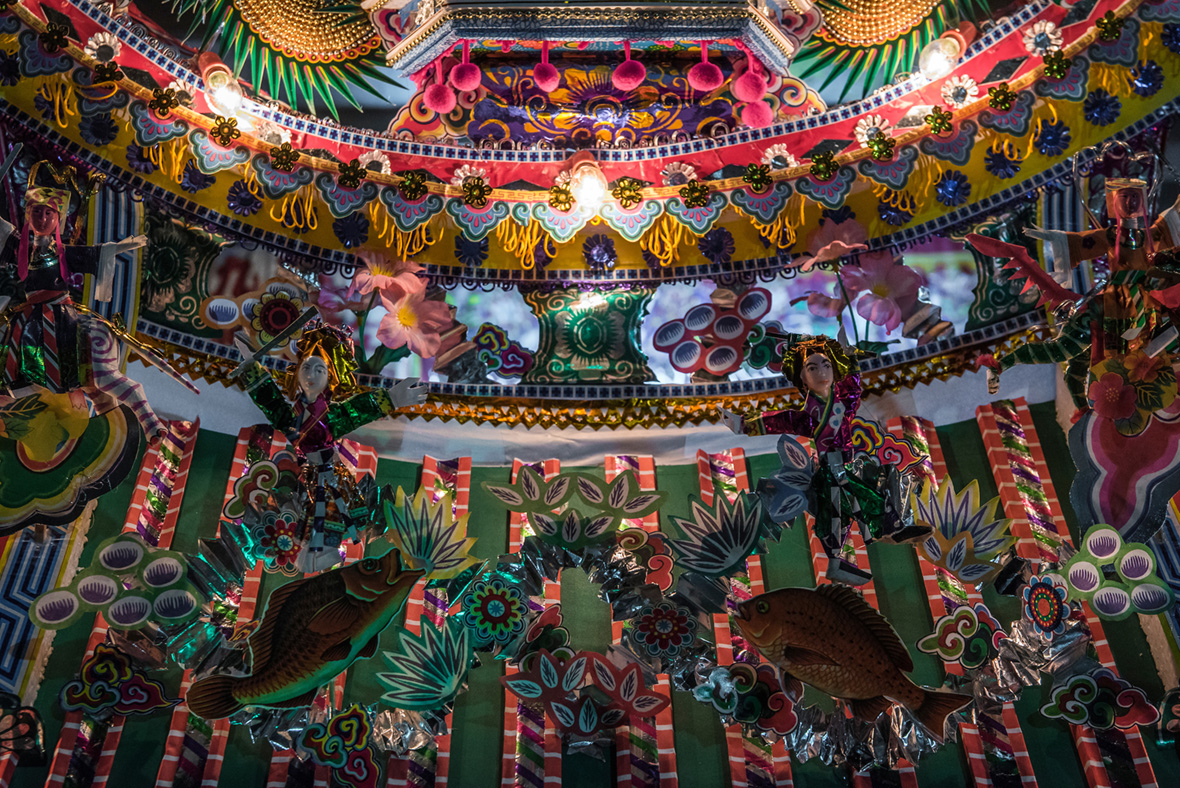
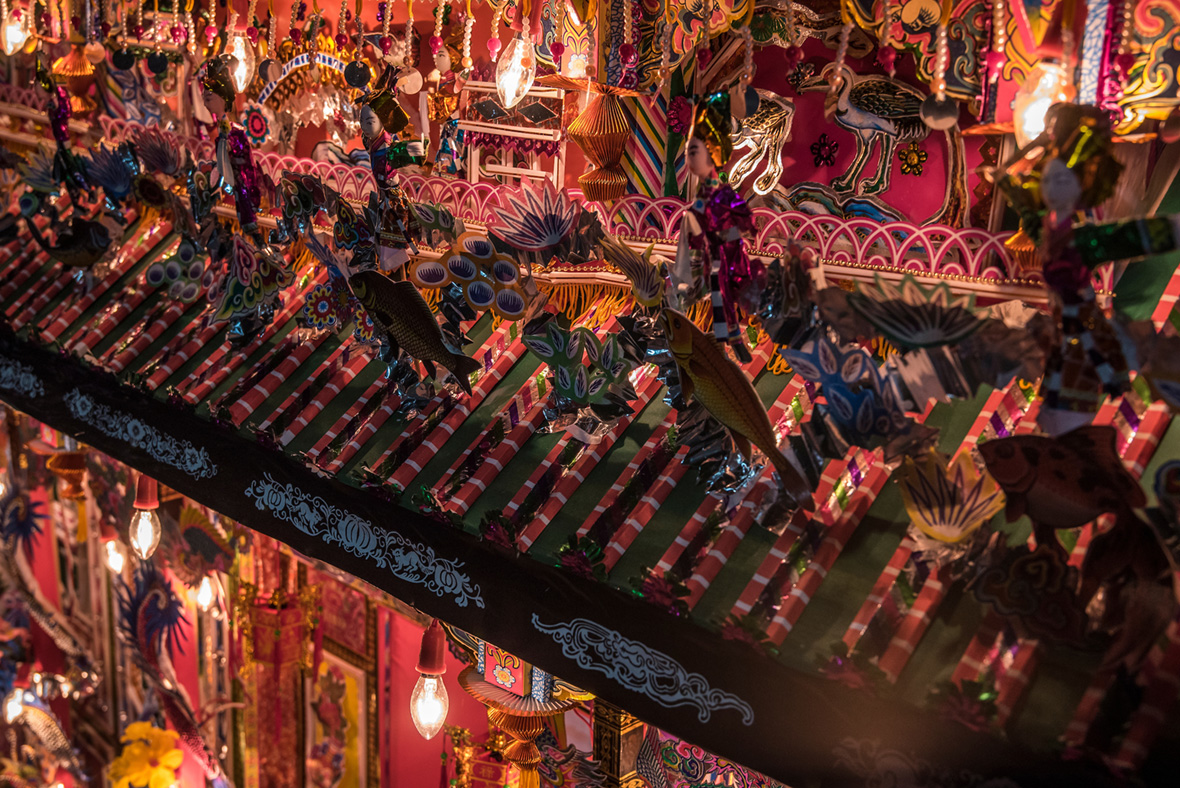
His zhizha creations are supported by bamboo sticks and covered with foam and paper. But they are composed with such intricate details that an untrained eye might mistake them for real buildings. A closer look at one of his latest works reveals various motifs of Chinese mythology, including koi dragons on the ridge of the roof and depictions of folk tales on the walls, such as The Cowherd and the Weaver Girl, which relates to the same time of the year.
The interiors of Du’s mansions are furnished and designed like mansions; they even include a living room, bedrooms, and a kitchen. He makes sure to decorate each room with the right furniture, all of which are also made of paper, and fills the remaining spaces with stacks of joss money, the currency of the afterlife. He then seals the backside with paper walls. Finally, he flips a switch, lighting up his creation with dozens of small lamps for an even more ethereal look.
制作纸扎作品时,他先用竹棍作为结构支撑,再在外面覆盖泡沫和纸张。他的作品细节繁复逼真,乍看可能会信以为真。仔细观察他的一件最新作品,可以看到上面充满了各种中国神话元素,比如屋脊上盘绕的锦鲤,还有墙上描绘的像“牛郎织女”这样的各种民间传说。
杜振豪纸扎大厦的内部装饰和设计都和真正的建筑一样,有客厅、卧室和厨房,并且每个房间都配了相应的家具,所有家具也都是用纸制成,其余的空间则堆满了冥币。然后,他会用纸墙密封背面。最后,添加数十个小灯,接通电源,点亮整个纸扎大厦,使其看上去更加空灵。
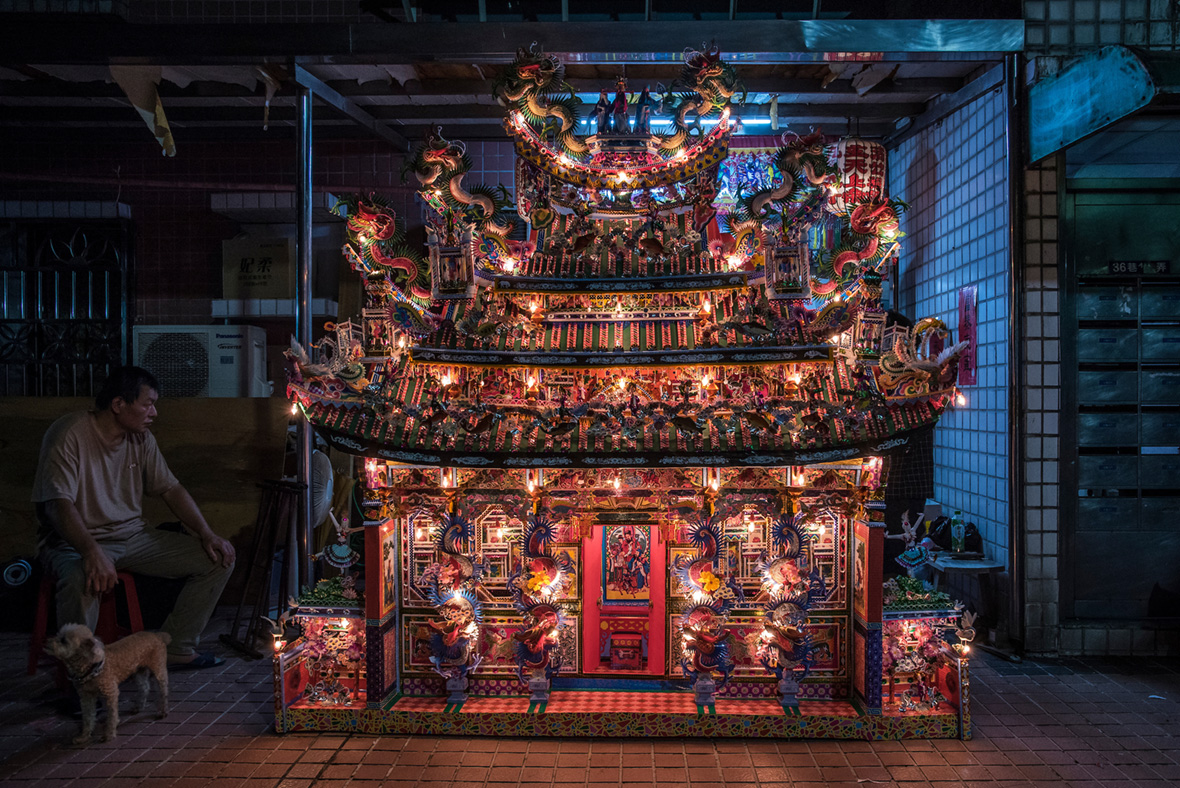
On the evening of the celebrations, each clan parades with their zhizha creations through Keelung’s central streets as they head towards Badouzi, a port located a few kilometers away. When they reach the port, they display their works once more to the public, there’s more praying, and the interiors are filled with even more sacrificial money. Around midnight, they carry the zhizha creations into the shoreline, set them on fire, and release them to float in the sea. The further they float, the more blessed its clan will be.
在中元节庆典当晚,每个氏族都会带着他们的纸扎作品,在基隆的中心大街上游行,一路向着几公里外的八斗子渔港前进。到达港口后,他们再次向公众展示这些纸扎作品;然后祈祷和祭祀,再往纸扎大厦里塞更多的冥币。到了午夜,他们抬着纸扎到岸边点燃并投入海里。纸扎飘浮得越远,代表氏族所获得的福气越大。
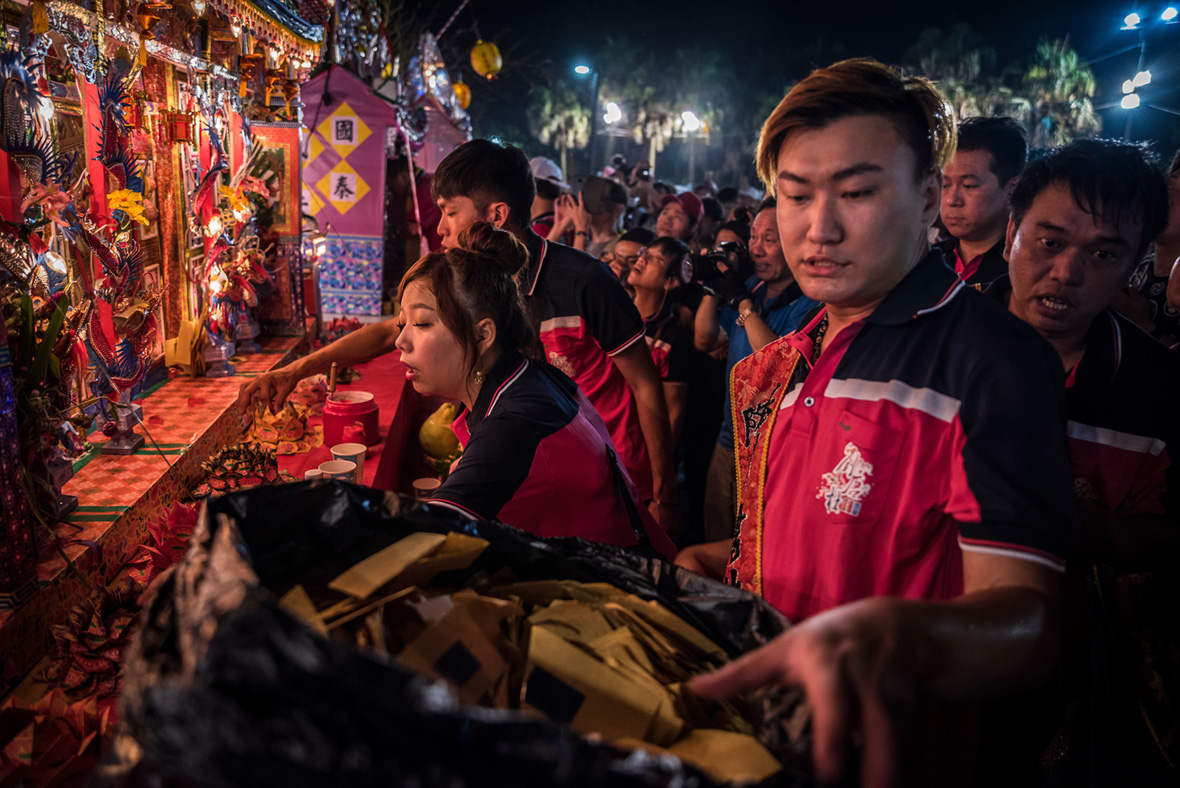
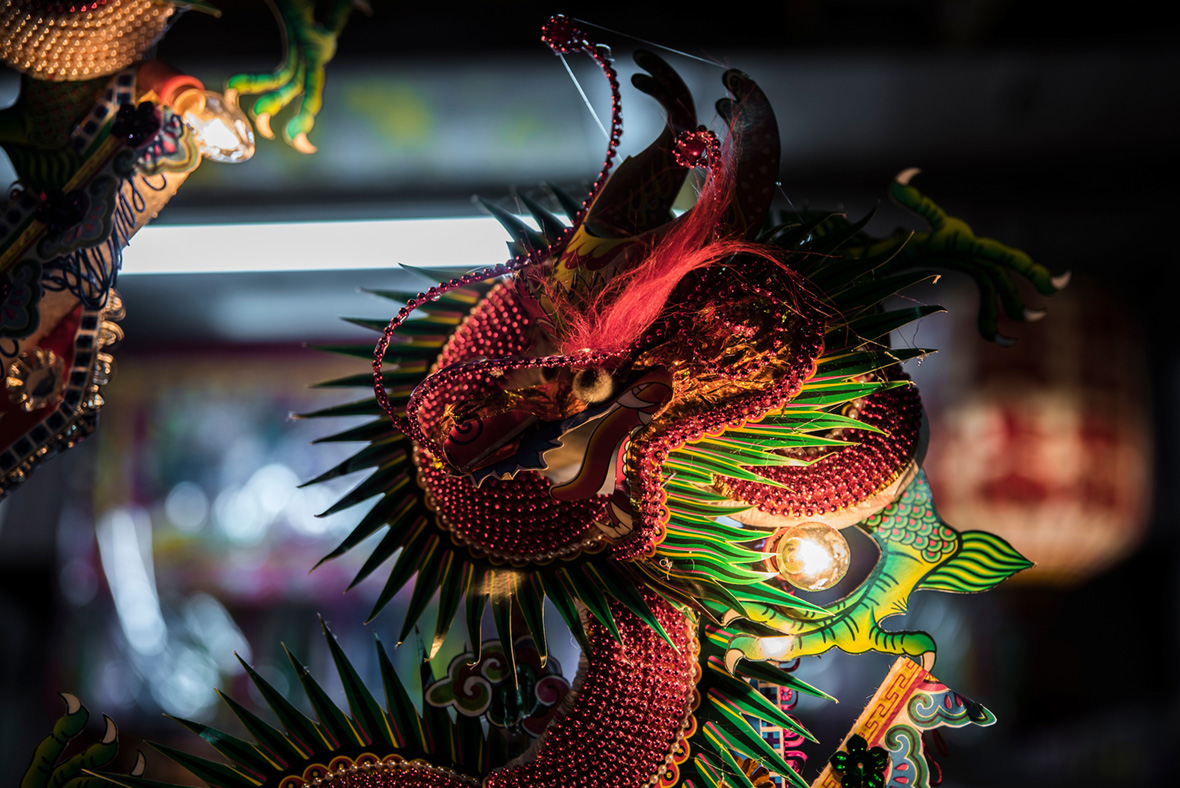
“Fire is essential to send something from one generation to another; it transforms, and it’s the symbol of continuation, as well a medium with which we can send our offers and to communicate our thoughts to our ancestors,” says Du. “Nowadays everything is about technology, and it has to be scientifically proved. Fewer people believe in ancient tales and folklore.”
But the symbology of his art and of the festival at large is also meaningful to the living. By intermixing surnames from different ethnicities in light of past disputes, the ritual encourages harmony, respect, and shared devotion. It unites Keelung’s inhabitants from different backgrounds and generations while keeping their local traditions alive.
“火在人们的世代传承中有着必不可少的作用;它代表着转变,也是延续的象征,将我们的祭品与想说的话传达给祖先。”杜振豪说,“如今,人们视科技为至上的真理,什么都要讲究科学证明,已经越来越少人愿意相信这些古老的故事和民间传说。”
但他的纸扎艺术以及整个节日对现在的人们也有相当的意义。通过将过去冲突双方的姓氏结合起来,这场仪式旨在向人们提倡和谐共处、相互尊重和共同的奉献精神,让来自不同背景和不同年龄的基隆居民团结起来,同时传承着当地的传统。

This promotion of harmony is particularly interesting to Du. A fascinating aspect of his work is that it doesn’t rely solely on ancient motifs but also draws inspiration from contemporary culture, trends, and achievements, such as the recent legalization of same-sex marriage in Taiwan. “This part here is about ethnic integrations,” he says while showing a prominent detail of the roof that’s colored like a rainbow. “But it’s also about the marriage between people of the same gender. It symbolizes a peaceful world. Everybody is equal. This idea is essential to the whole world, not just Taiwan. It’s important for the ghosts and the living to see this.”
对于“和谐”这一理念,杜振豪尤其感兴趣。他的纸扎作品的特别之处在于它们不仅取材于古代的元素,也会从现代的文化和潮流中汲取灵感,譬如近期台湾的同性婚姻合法化议题。他指着纸扎作品中像彩虹一样的屋顶细节说:“这个细节代表的不仅是民族融合的问题,也是指同性之间的婚姻。它象征着一个和平的世界。每个人都是平等的。这一理念对于整个世界都至关重要,不仅仅是台湾。无论是人是鬼,都应该明白这一点。”
Like our stories? Follow us on Facebook and Instagram.
Contributor: Tomas Pinheiro
Photographer: Claudio Sieber
Chinese Translation: Yang Yixuan

